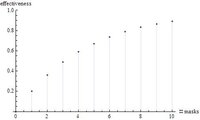eric beans
Junior Member
- Joined
- Sep 17, 2019
- Messages
- 72
I was listening to a podcast where someone was saying that even if wearing bandanna/homemade masks were only 20% effective, if everyone wore it, it would at least be 80% effective. They mentioned the additive nature.
I was puzzled how they got to 80%. I'm thinking if 2 people are wearing masks and say the bandanna are only 20% effective, wouldn't that only add up to 40%? What am I missing here?
I was puzzled how they got to 80%. I'm thinking if 2 people are wearing masks and say the bandanna are only 20% effective, wouldn't that only add up to 40%? What am I missing here?

